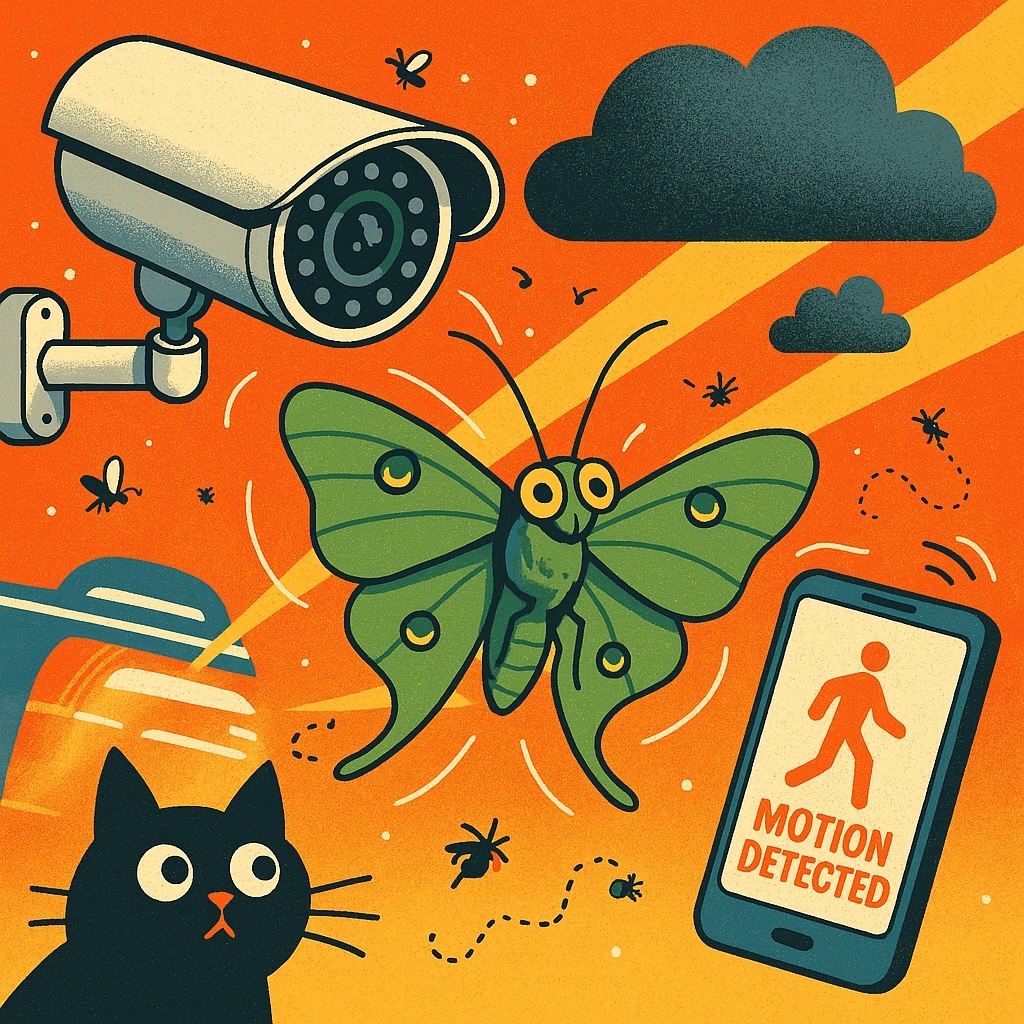Modern video surveillance systems have become a key part of both smart homes and enterprise infrastructure. IP cameras, NVRs, hybrid cloud setups—these are now accessible not only to corporations but to homeowners as well. However, as adoption grows, so does a new class of problems. One of the most common issues is false motion detection alerts.
Root Causes of False Alarms: From Biology to Optics
Moths and IR Illumination
Infrared illumination (850 nm or 940 nm) attracts nocturnal insects. Cameras detect chaotic movement near the lens, interpret it as motion, and generate events. From the system’s point of view, this is perfectly logical: enough pixels have changed, the detection threshold is exceeded, and the trigger fires. From the user’s perspective, it’s just noise.
Lighting Changes
Even during the day, cameras often produce false alarms when exposure shifts. Passing clouds, headlight glare, or moving tree shadows cause sudden brightness changes. Frame differencing methods see this as motion because they rely on pixel intensity change, not object semantics.
Small Objects in Frame
Detectors without object classification respond to any motion—leaves, pets, drifting plastic bags. This creates an avalanche of notifications, which eventually leads users to ignore alerts altogether.
Technical Impact of False Alerts
Storage Overhead
Frequent triggers rapidly inflate video archives. Useful recordings get buried under irrelevant events, retrieval takes longer, and storage subsystems experience higher load.
Increased I/O Operations
Every event creates a new clip, writes metadata, and generates thumbnails. This puts additional stress on CPU and disk I/O, especially in multi-camera deployments.
Operator Fatigue
In manned monitoring centers, repeated false alarms lead to “alarm fatigue,” where staff response time to real incidents drops significantly.
Frequent triggers rapidly inflate video archives. Useful recordings get buried under irrelevant events, retrieval takes longer, and storage subsystems experience higher load.
Increased I/O Operations
Every event creates a new clip, writes metadata, and generates thumbnails. This puts additional stress on CPU and disk I/O, especially in multi-camera deployments.
Operator Fatigue
In manned monitoring centers, repeated false alarms lead to “alarm fatigue,” where staff response time to real incidents drops significantly.
Intelligent Filtering as a Solution
The modern approach is to move away from simple pixel-change detection and toward true computer vision. This means object detection models (YOLO, SSD, EfficientDet) combined with tracking algorithms.
SmartVision implements a hybrid solution:
- Object Classification. The system distinguishes humans, animals, vehicles, insects, and dynamic background elements (trees, rain).
- Region Masking. Users can exclude irrelevant areas (e.g., the street behind a fence) to reduce noise.
- Optimized Archiving. Recording is activated only when significant objects are detected, lowering IOPS and saving storage space.
Benefits for Engineers and Integrators
- Reduced Infrastructure Load. Less data traffic, easier backups, lower storage costs.
- Improved Analytics Accuracy. Fewer false events mean more reliable SLA metrics for incident response.
- Flexible Configuration. Sensitivity, object types, and monitoring zones can be tuned without hardware replacement.
False alarms are more than an annoyance — they directly impact the reliability of the entire surveillance system. Transitioning from primitive frame-differencing motion detection to intelligent video analytics is no longer optional — it’s essential.
Solutions like SmartVision help minimize noise, reduce server-side load, and restore user confidence that every alert truly matters.

